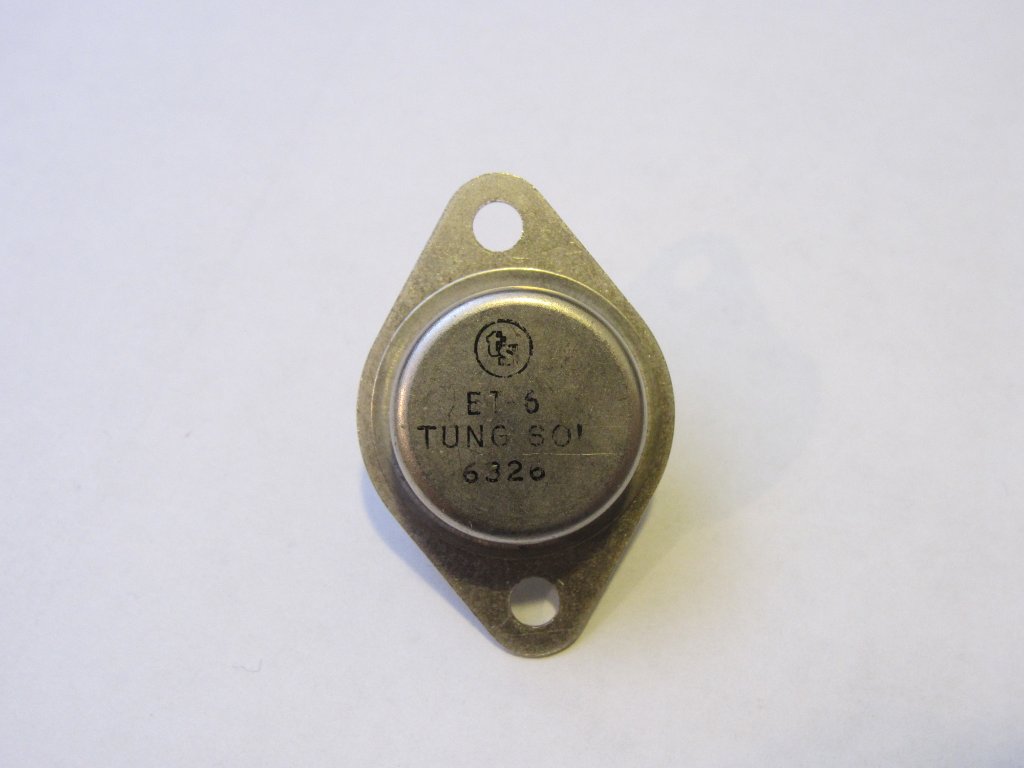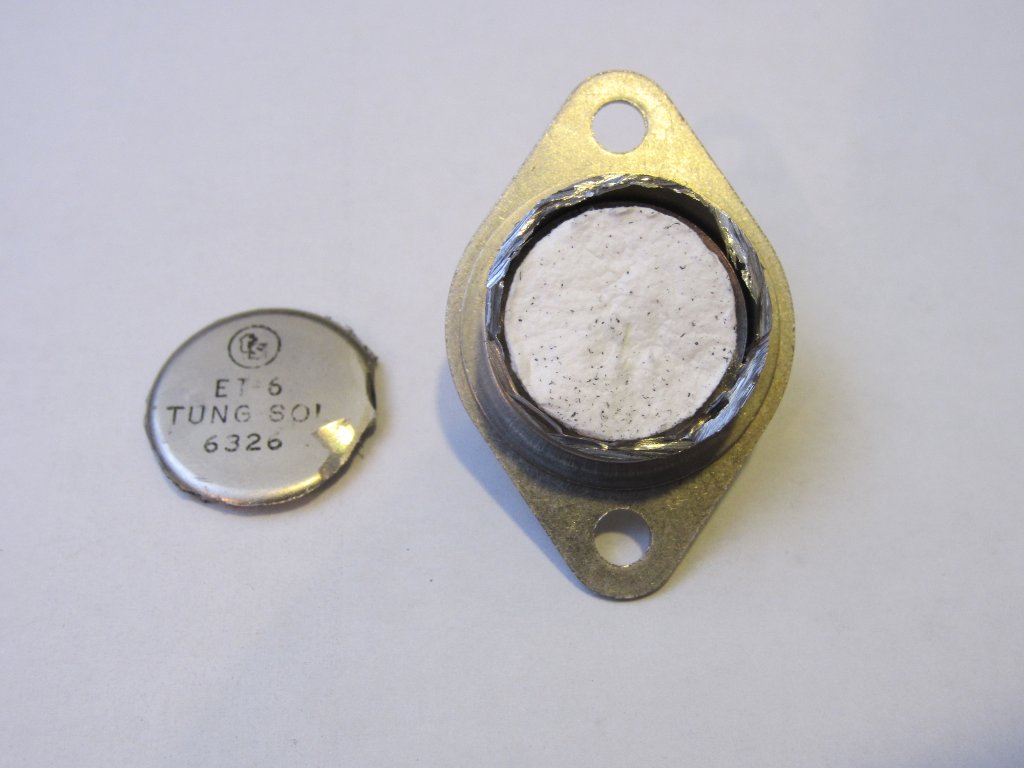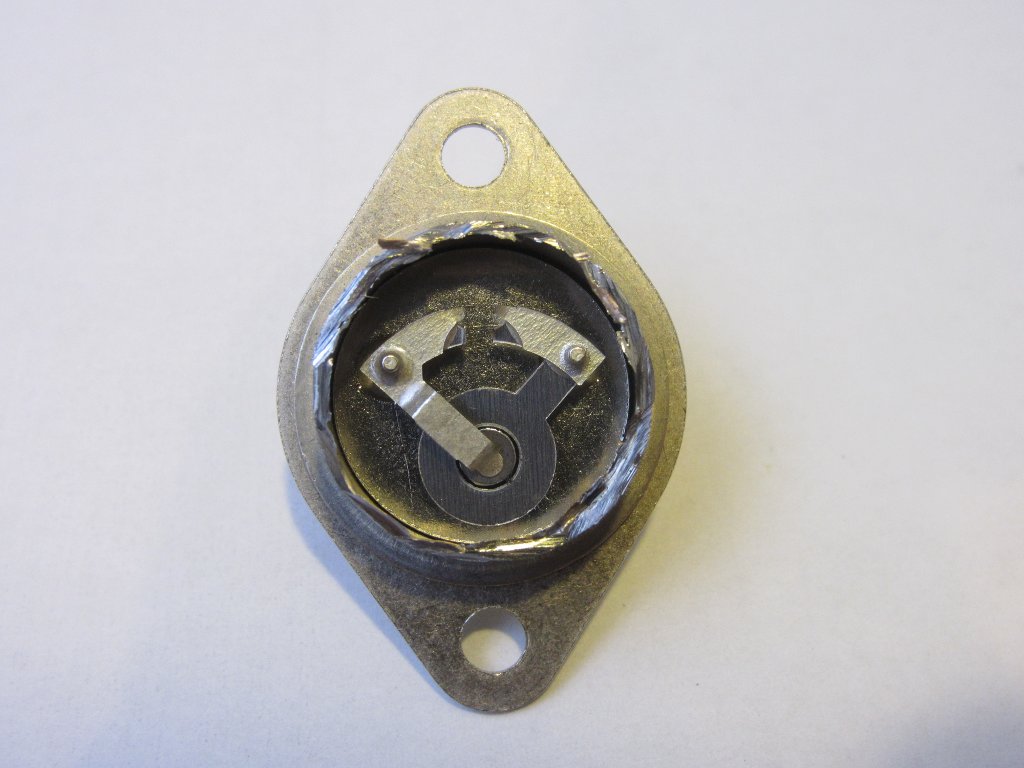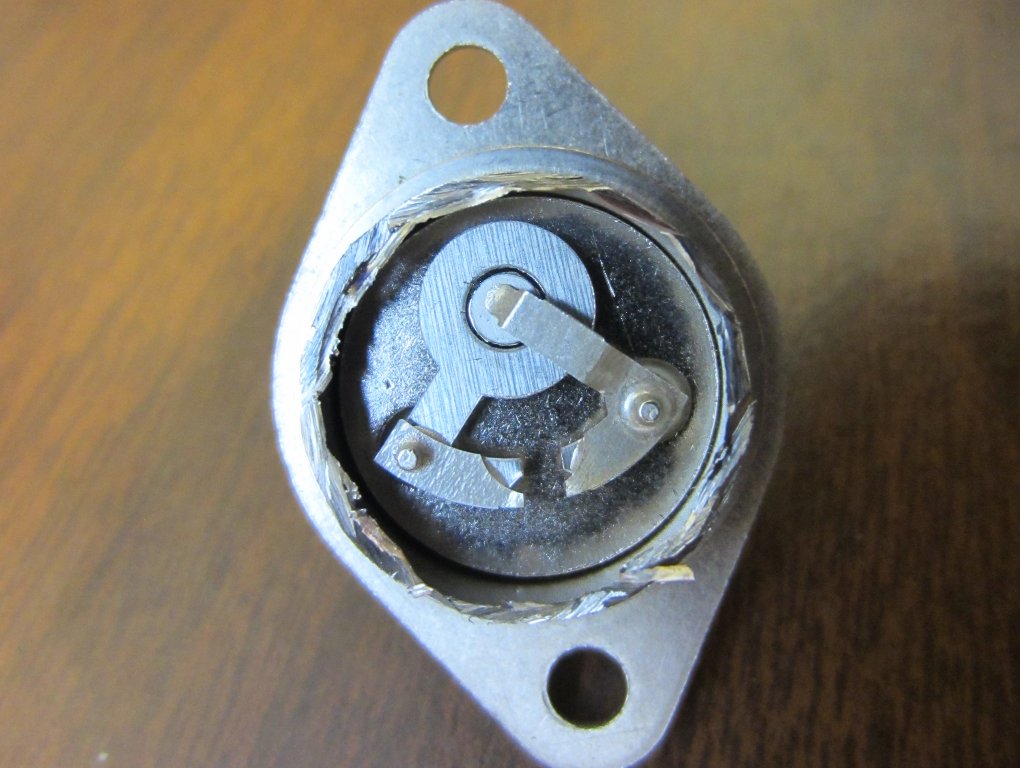I recently bought a few old power transistors from eBay. These are PNP Tung-Sol germanium transistors. According to the date code (6326) these transistors were made back in 1963, long before I was born. The last time I actually used a germanium transistor was more than twenty years ago when I was learning to make transistor radios.
Unlike most transistors we use today in which the PN junctions are formed via diffusion process, transistors back then were mainly alloy-junction transistors. To verify this, I carefully cut off the top of one of the metal cans using a Dremel. There is a pad of some kind (feels like cotton) inside the hermetically sealed cavity, maybe it was used to absorb the remaining moisture (I am not entirely sure) after the transistor was sealed.

|

|
Below are two pictures of the internal construction of this Tung-Sol transistor. Clearly, the large ring surrounds the germanium crystal forms the base. And on either side of the crystal, an alloy contact is fused onto the crystal to form the emitter and the collector. This is usually how those alloy-junction transistors were made.

|

|
The forward voltage drop of either PN junction is less than 200 mV compared to the 700 mV or higher voltage drop of a typical silicon PN junction But unlike modern silicon transistors, in which the reverse saturation current of a PN junction is roughly 10 to 100 nA, the reverse saturation current is in the mA range (depending on the reverse voltage applied) for the batch of germanium PNP transistors I got. This high leakage current is quite typical for germanium transistors and especially for these power devices.

